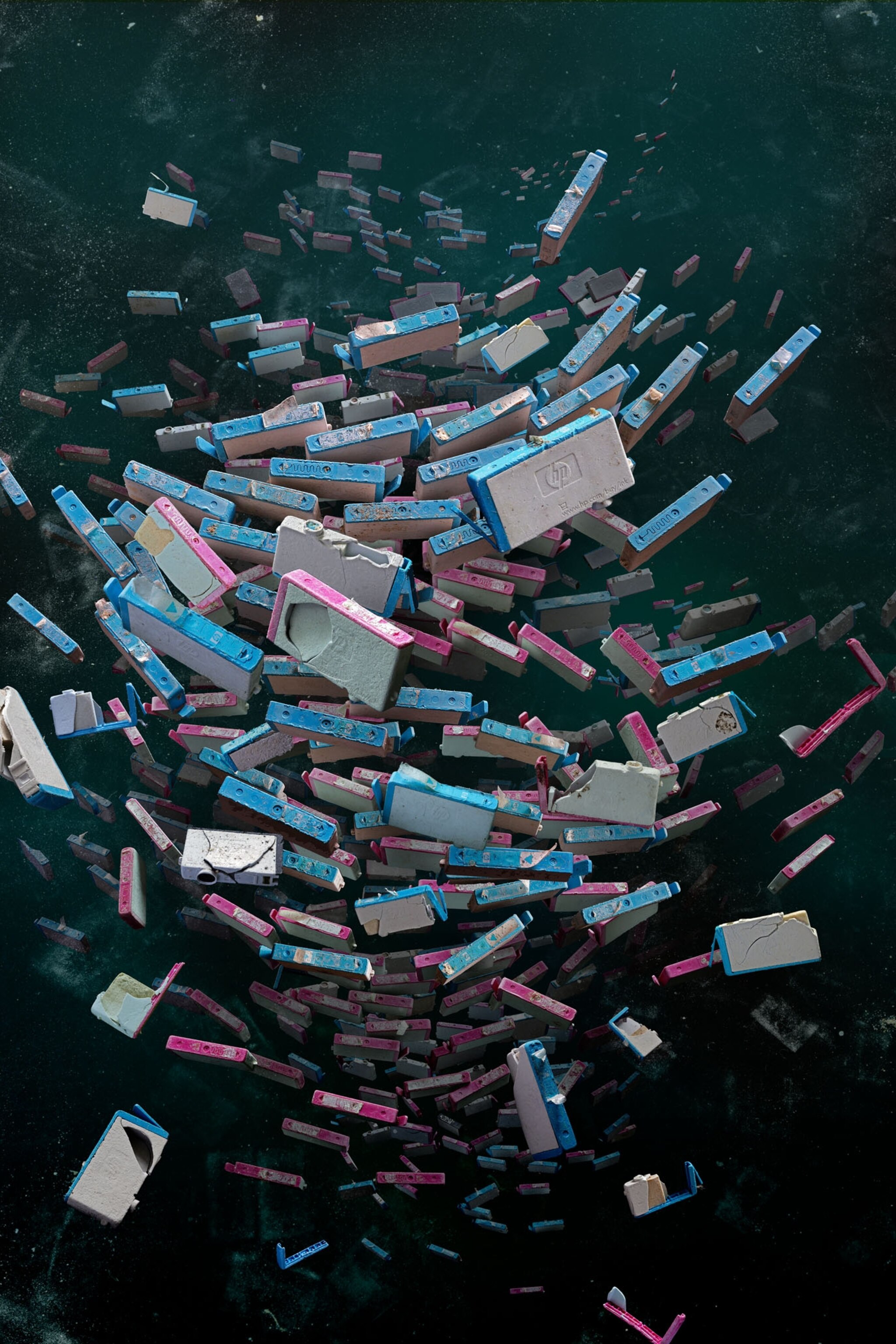
The Haunting Art of Plastic Pollution
Using trash from the sea and birds’ stomachs, Mandy Barker’s work forces us to face our waste.
Read this story and more in the June 2018 issue of National Geographic magazine.
When photographer Mandy Barker returned to the English beach where she collected shells as a child, she found a baby’s car seat and a refrigerator among piles of plastic waste. She also noticed an air of indifference: It seemed to her that people weren’t fazed by seeing a beach strewn with litter.
So she changed the context. By collecting pieces of plastic waste and photographing them on a plain background, Barker found that the trash became shocking again. “I wanted to create something that would resonate,” she says.
That impulse has led to a series of photographic projects that illuminate plastic’s ubiquity as well as its reach—how printer cartridges that spilled off a ship in the Atlantic Ocean, for example, washed up on beaches from North Africa to Norway. Or how discarded bottle caps, from the hundreds of billions of plastic bottles that are manufactured each year, turn up on beaches—and in birds—around the world. Barker crowdsourced a global collection to show that.
She plans her projects in collaboration with marine scientists. The photos “give science a visual voice,” she says, conveying plastic’s impact on the natural environment in a way that scientific research papers can’t. Barker feels in her gut the reality that no area in the world is free from plastic anymore, “from the poles to the Equator, from the sea surface to the ocean floor.” She wants the rest of us to feel it too.
This story is part of Women of Impact, a National Geographic project centered around women breaking barriers in their fields, changing their communities, and inspiring action. Join the conversation in our Facebook group.


You May Also Like
Go Further
Animals
- This ‘saber-toothed’ salmon wasn’t quite what we thoughtThis ‘saber-toothed’ salmon wasn’t quite what we thought
- Why this rhino-zebra friendship makes perfect senseWhy this rhino-zebra friendship makes perfect sense
- When did bioluminescence evolve? It’s older than we thought.When did bioluminescence evolve? It’s older than we thought.
- Soy, skim … spider. Are any of these technically milk?Soy, skim … spider. Are any of these technically milk?
- This pristine piece of the Amazon shows nature’s resilienceThis pristine piece of the Amazon shows nature’s resilience
Environment
- This pristine piece of the Amazon shows nature’s resilienceThis pristine piece of the Amazon shows nature’s resilience
- Listen to 30 years of climate change transformed into haunting musicListen to 30 years of climate change transformed into haunting music
- This ancient society tried to stop El Niño—with child sacrificeThis ancient society tried to stop El Niño—with child sacrifice
- U.S. plans to clean its drinking water. What does that mean?U.S. plans to clean its drinking water. What does that mean?
History & Culture
- Séances at the White House? Why these first ladies turned to the occultSéances at the White House? Why these first ladies turned to the occult
- Gambling is everywhere now. When is that a problem?Gambling is everywhere now. When is that a problem?
- Beauty is pain—at least it was in 17th-century SpainBeauty is pain—at least it was in 17th-century Spain
- The real spies who inspired ‘The Ministry of Ungentlemanly Warfare’The real spies who inspired ‘The Ministry of Ungentlemanly Warfare’
- Heard of Zoroastrianism? The religion still has fervent followersHeard of Zoroastrianism? The religion still has fervent followers
Science
- Here's how astronomers found one of the rarest phenomenons in spaceHere's how astronomers found one of the rarest phenomenons in space
- Not an extrovert or introvert? There’s a word for that.Not an extrovert or introvert? There’s a word for that.
- NASA has a plan to clean up space junk—but is going green enough?NASA has a plan to clean up space junk—but is going green enough?
- Soy, skim … spider. Are any of these technically milk?Soy, skim … spider. Are any of these technically milk?
- Can aspirin help protect against colorectal cancers?Can aspirin help protect against colorectal cancers?
Travel
- What it's like to hike the Camino del Mayab in MexicoWhat it's like to hike the Camino del Mayab in Mexico
- Is this small English town Yorkshire's culinary capital?Is this small English town Yorkshire's culinary capital?
- Follow in the footsteps of Robin Hood in Sherwood ForestFollow in the footsteps of Robin Hood in Sherwood Forest
- This chef is taking Indian cuisine in a bold new directionThis chef is taking Indian cuisine in a bold new direction




